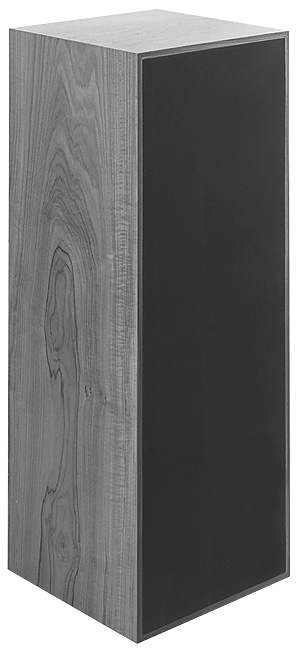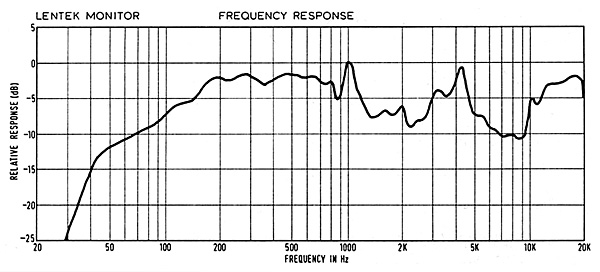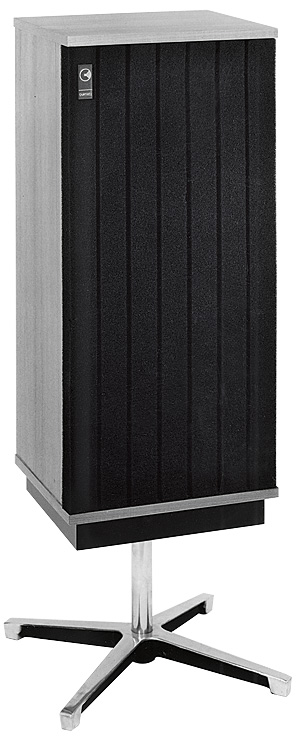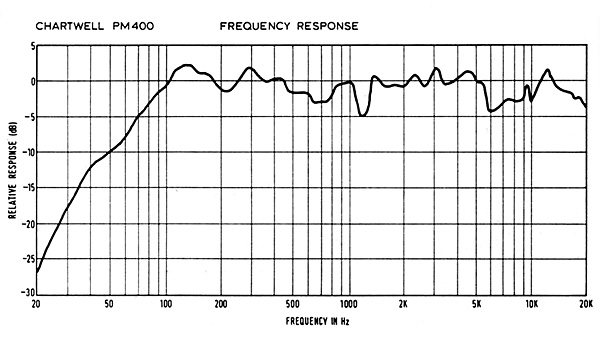Three loudspeakers: Leak, Lentek and Chartwell Page 2
The upper chamber has a single partition, also designed to break up resonances, and contains the midrange unit and tweeter. The crossover is on the back of the front panel, accessible after removing the fixing screws. A sealing strip is used between the panel and the cabinet, and care must be taken not to stretch this. The speaker is substantially constructed throughout, with all components and leads properly secured. It is very heavy, and naturally stable in use, and should not be used on a stand.
 Surprisingly Solid
Surprisingly Solid
For our comparison tests, the Quad ESLs were driven, as always, by their own 303 amplifier, while the Lentek Monitors were driven by a Yamaha CA1000 to ensure adequate power margins. Tests were also made using a second 303 with the Monitors, but any differences between the amps were not significant with normal material at domestic levels.
In purely musical terms, the Monitors compared well with the Quad ESLs, though there were naturally slight differences in individual areas. Speech was very similar, with a pleasant absence of chesty boom. Among orchestral instruments the brass was equally clean, except for the merest trace of boxiness, woodwinds were marginally peakier, and the lower strings had less body.
With low frequency sources there was less bass than from the Quad ESLs, though what there was had no coloration. With a modest amount of bass boost at a low turnover frequency, organ pedals were surprisingly solid, and somewhat smoother than via the ESLs. Plucked sounds and percussion were just the slightest bit more cramped, and there was a little reduction in the general ambience of some sounds, but these effects did vary with listener position, and may well be functions of the unit distribution. The stereo image was adequately firm, if not as precise as the Quad ESLs on axis. Off axis, the Monitors remained firm, especially for vertical movement, and quality changes with movement were small.
Using the Monitors on their own gave extremely pleasant listening, natural and without strain. A good deal of experimention led me to conclude that a position about 300mm from the side walls and some 900mm from the end walls was optimum in this case.
Smooth And Musical
The response curve is flat to ±5dB from 70Hz to 20kHz – a very good result, especially as some of the apparent peakiness is sure to be the result of interference effects which would not be of much significance in the average listening room. There is no doubt at all in my mind that these are very smooth, musical speakers, and the differences noted between them and the standards were neither great nor particularly significant as far as the majority of listeners are likely to be concerned.

One's first impression is that the bass response is somewhat below that which might be expected from a cabinet of this size, but this has to be weighed against the superior smoothness and complete absence of boom. My own recommendation is to keep them near a wall but well away from the corner, and to use a modest, low-turnover bass boost. Results are then relaxed and superb. Those mainly interested in orchestral music could well find even this small correction unnecessary. The Lentek Monitor has to be excellent value for money.
Chartwell Pm400
This is the smallest of the three loudspeakers reviewed here and consists of a rectangular cabinet, veneered on all sides except the front panel, with the top and bottom surfaces extended forward by some 38mm with respect to the sides, and mounted on a three-sided plinth, 50mm high, open at the back. The front panel is finished in dull black Formica (or similar material), and carries the three units in the usual order, with their centres vertically aligned. Near the top of the panel, and placed on either side, are two D-shaped vents which act as the reflex port. The front panel carries strips of plastic material from which protrude numerous small pegs with double-sided hooks, and these engage the 38mm-thick foam front cover. The cover has vertical slots cut partially through it.
 The inside surfaces of the cabinet are treated with bituminous damping pads, overlaid with plastic foam to a depth of about 25mm on the sides, and at least twice that thickness at top and bottom. The midrange unit is enclosed in its own wood box, which is attached to the inside of the front panel. The box is about 175mm square and 125mm deep, and the crossover PCB is fixed to the rear of the box, sitting on a layer of thin foam. The recessed connection panel on the rear of the cabinet requires a 2-pin DIN cable-mounting socket. But 4mm sockets are also provided, and there are three fuseholders, one for each unit. The speaker is very well constructed, and the only minor criticism concerned the rather crudely inserted fixing screws for the PCB.
The inside surfaces of the cabinet are treated with bituminous damping pads, overlaid with plastic foam to a depth of about 25mm on the sides, and at least twice that thickness at top and bottom. The midrange unit is enclosed in its own wood box, which is attached to the inside of the front panel. The box is about 175mm square and 125mm deep, and the crossover PCB is fixed to the rear of the box, sitting on a layer of thin foam. The recessed connection panel on the rear of the cabinet requires a 2-pin DIN cable-mounting socket. But 4mm sockets are also provided, and there are three fuseholders, one for each unit. The speaker is very well constructed, and the only minor criticism concerned the rather crudely inserted fixing screws for the PCB.
The recommended operating height is about 330mm, for which Chartwell can supply a suitable stand. The listening comparisons with the Quad ESLs showed surprisingly small differences. With some sources,
I should have found it difficult to say which pair was in use – apart from their necessarily different positions in the room – and these sources included male voices. Comparing orchestral sounds, trombones seemed a little more hollow and more prominent, and some woodwinds were a fraction cooler, especially in upper registers. Strings showed up a trace of midband coloration, and pianos were just a little more boxy.
True To Life
Overall, large orchestras sounded very similar except for the trace of mid-coloration, and this was confirmed using pink- and white-noise sources. Organs were very realistic, with the deeper bass generally similar to the Quad ESL. Bright trumpet sounds were a mite cooler, and sharp mixtures a bit more 'edgy'. Choral music was also similar except for a slightly cooler ambience and less prominence with basses and tenors. High frequency bells were indistinguishable as to the speakers in use, and harpsichords were also very much alike except for a little coloration in the lower notes and a slightly cooler ambience.
Listening on axis, the PM400 gave excellent stereo definition, though wasn't as analytical as the ESL in this regard. However, movements off-axis had only a minimal effect on both the PM400's tonal characteristics and its image accuracy. A good image was obtainable over a very wide area, and the angling of the loudspeakers was uncritical.
General listening over a long period confirmed the small amount of mid coloration, but the general HF performance was found to be very true to life. Not only were the speakers unobtrusive but the soundstage seemed comfortable in both width and depth.
Small Corrections
The frequency response curve indicates that the very tight specification has been met above 70Hz (though our measurement was not at the specified distance). The subjective mid-freq. effects may well be attributable to the shape of the response between about 150Hz and 1.5kHz, and this possibility was examined with the aid of a Klark-Teknik graphic equaliser.

The correction for best results varied a little from the inverse of the response, as would be anticipated for several reasons, but it was possible to show that the small trough around 700Hz, the dip above 1kHz, and the variations round 200Hz and in the 6-9kHz region, were significant. With very small corrections – none more than 3dB – the sound quality was quite outstandingly good.

























































